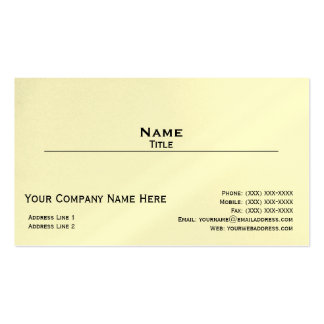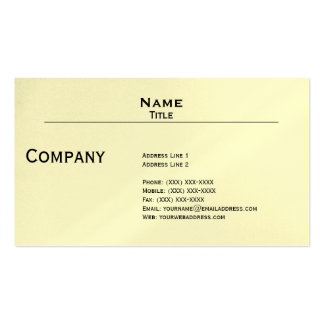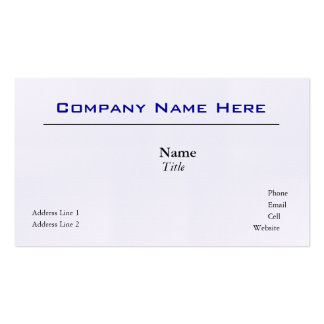How much does radio advertising cost?
An effective size campaign on a popular station could cost $500 per week in small town like Myrtle Beach, SC to $8,000 per week in a large city like New York. For your money, you could reasonably expect to get 20 commercials, with the majority of them airing during desirable times of the day.
Unfortunately, the average cost per spot is not a great way to measure radio advertising costs. Depending on the time of day, the number of people listening to a spot may vary greatly. A spot that airs at 1:00 AM may have less than 1/10th the listeners of a spot that airs at 1:00 PM. By including “;garbage” spots, a radio station can make the cost per spot sound very cheap.
Instead of talking about the number of radio spots, media buying professionals look at Cost Per Thousand (CPM) or Cost Per Point (CPP) to measure radio advertising costs.
CPP – What is the cost to reach 1% of the population (also known as a Gross Rating Point or GRP) within a specific geographic area?
A CPM in the range of $10 to $20 would be considered normal. CPP can vary widely depending on the population of an area. CPP is useful in comparing the relative costs of different advertising options within a specific area.
Is there anywhere you can find out more precise information about current radio CPM or CPP rates? The best sources of this information is a online publication called the Standard Rate and Data Service (SRDS). Unfortunately, a subscription to this service will cost around $800. Some major research libraries may have a subscription and be able to pull up the the information on your behalf.
When you start working with an ad rep, ask for the radio station’s rate card. He or she may try to provide you a customized proposal without giving you the rate card. Just say that you appreciate a customized proposal, however, you want to understand the general pricing framework.
f you’re a good negotiator, you may be able to get 20% to 40% off the rate card.
The rate cards that you see may include a 15% markup. Some media agencies will buy your media for “;free” but, they receive a payment from the radio station. While this practice is legal, it does lead to rate cards being higher priced than the media alone should cost. If you’re buying without the help of agency, ask to be recognized as an “;in-house agency” and receive the agency discount.
Radio stations like to have choice on when to run your advertisement. By giving them the ability to run your ad at the “;best available time” between lets say 6 AM and 6 PM, you may be able to get them to shave a considerable amount off the rate card. However, you want to make sure that you don’t get stuck in the worst available time after signing a deal.
There are two things that you can do to prevent this from happening.
If they know you’re paying attention, the rep will work harder to make sure your ad lands in a good spot.
The cost of radio advertising depends on several factors:
- How many people listen to the radio station during the times when your commercials are run?
- Who listens to the station?
- Who else wants the radio spots?
- How well do you negotiate?
Radio Stations Sell Spots, But Advertisers Buy Listeners
When you ask your local radio station to put to together a media buying proposal for you, they will provide you a plan that lists a certain number of spots. They may specify certain times of the day that those spots will air.Unfortunately, the average cost per spot is not a great way to measure radio advertising costs. Depending on the time of day, the number of people listening to a spot may vary greatly. A spot that airs at 1:00 AM may have less than 1/10th the listeners of a spot that airs at 1:00 PM. By including “;garbage” spots, a radio station can make the cost per spot sound very cheap.
Instead of talking about the number of radio spots, media buying professionals look at Cost Per Thousand (CPM) or Cost Per Point (CPP) to measure radio advertising costs.
Radio Advertising Cost Per Thousand (CPM) and Cost Per Point (CPP)
CPM – What is the radio advertising cost to reach a thousand listeners?CPP – What is the cost to reach 1% of the population (also known as a Gross Rating Point or GRP) within a specific geographic area?
A CPM in the range of $10 to $20 would be considered normal. CPP can vary widely depending on the population of an area. CPP is useful in comparing the relative costs of different advertising options within a specific area.
Is there anywhere you can find out more precise information about current radio CPM or CPP rates? The best sources of this information is a online publication called the Standard Rate and Data Service (SRDS). Unfortunately, a subscription to this service will cost around $800. Some major research libraries may have a subscription and be able to pull up the the information on your behalf.
Radio Advertising Costs Vary Based On The Demographics Of Listeners
If the majority of a radio station’s audience falls outside the 25-54 age range, you can expect the CPM rate to be on the lower side. Talk radio and country music formats tend to attract an older audience in general. However, if a station has a predominantly male audience between 18-35, you should expect rates to be higher. If a station attracts a wealthy audience, for example a jazz or classical station, you should also expect to pay higher CPM rate.Temporary Demand factors Can Play A Role
Politics can be bad for radio advertisers! If there a highly contested local, state, or national election, campaigns tend to pour money into local radio and TV at very elevated rates. As most radio advertising is sold on a preemptible basis, your ads may be knocked off the air if you don’t match these astronomical rates. The same may happen during major shopping times, such as around Thanksgiving and before Christmas, where major advertisers may buy up airtime to promote upcoming “;Sales”.How can you negotiate your radio advertising costs?
- Start with a rate card
- Ask for standard discounts like new advertiser discounts and agency discounts
- Buy on best available basis with a couple caveats
When you start working with an ad rep, ask for the radio station’s rate card. He or she may try to provide you a customized proposal without giving you the rate card. Just say that you appreciate a customized proposal, however, you want to understand the general pricing framework.
Having the rate card serves two purposes:
- You know the maximum price that you will pay.
- You will have a sense of how the radio station values running longer campaigns (volume discounts) and which times of the day are considered the most valuable.
f you’re a good negotiator, you may be able to get 20% to 40% off the rate card.
The rate cards that you see may include a 15% markup. Some media agencies will buy your media for “;free” but, they receive a payment from the radio station. While this practice is legal, it does lead to rate cards being higher priced than the media alone should cost. If you’re buying without the help of agency, ask to be recognized as an “;in-house agency” and receive the agency discount.
How to ask for a discount off the standard radio advertising prices.
The first time that you advertise, be sure to ask for a new advertiser discount. While such a discount may or may not exist, it leaves the door open for negotiating a lower price. Simply say “;I don’t know if radio will work, could you give me a lower price so I can effectively test it on my budget”. The account executive or station GM may give you the discount if they think it will get you to sign-on, even if the discount doesn’t exist.Radio stations like to have choice on when to run your advertisement. By giving them the ability to run your ad at the “;best available time” between lets say 6 AM and 6 PM, you may be able to get them to shave a considerable amount off the rate card. However, you want to make sure that you don’t get stuck in the worst available time after signing a deal.
There are two things that you can do to prevent this from happening.
- Ask your account executive to set expectations, “;your ad will probably run about 50% of the time in this time slot and 50% in that time slot”. The station will know when your ads will run the day before.
- Ask your ad rep to send you this information on a daily basis.
If they know you’re paying attention, the rep will work harder to make sure your ad lands in a good spot.







No comments:
Post a Comment